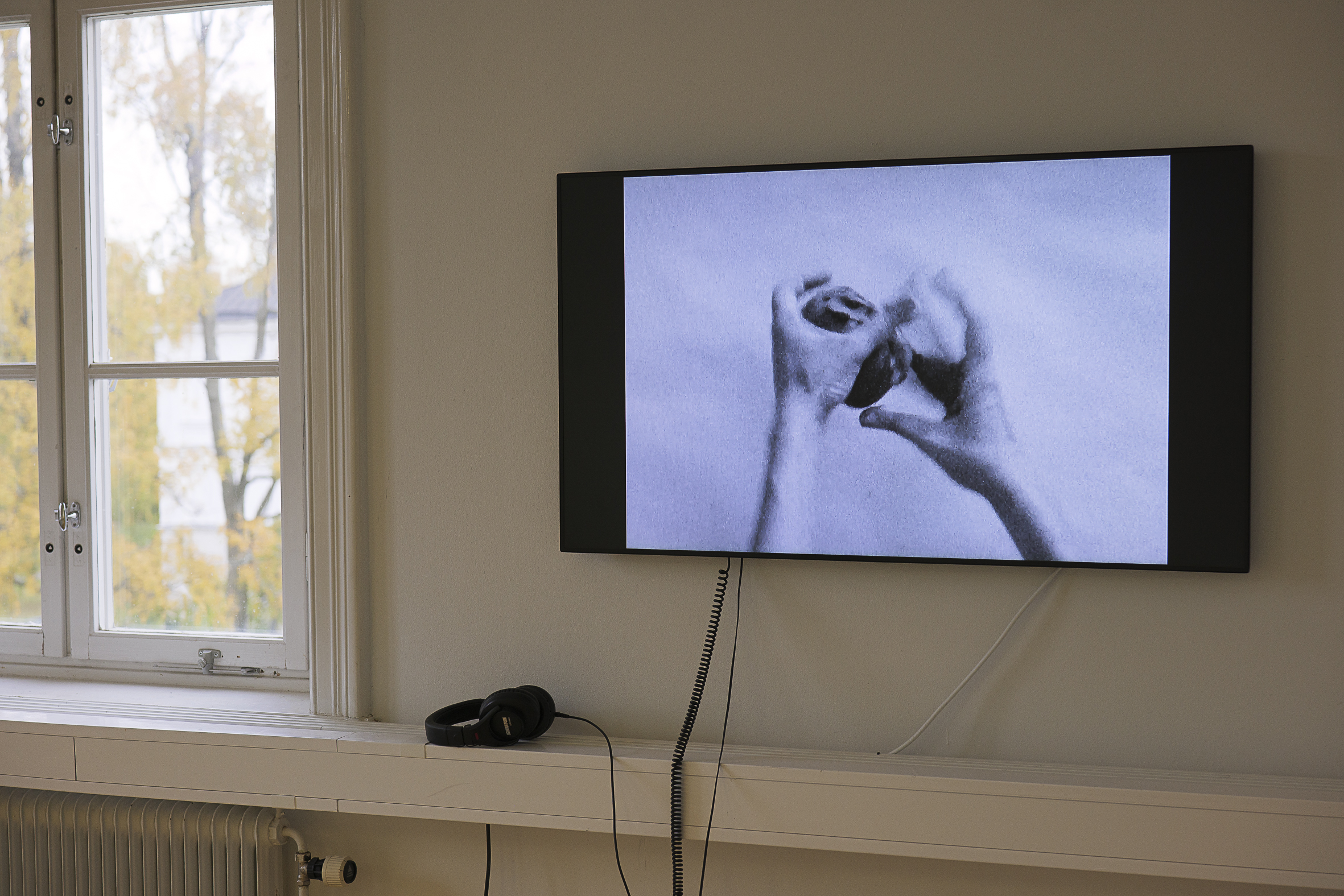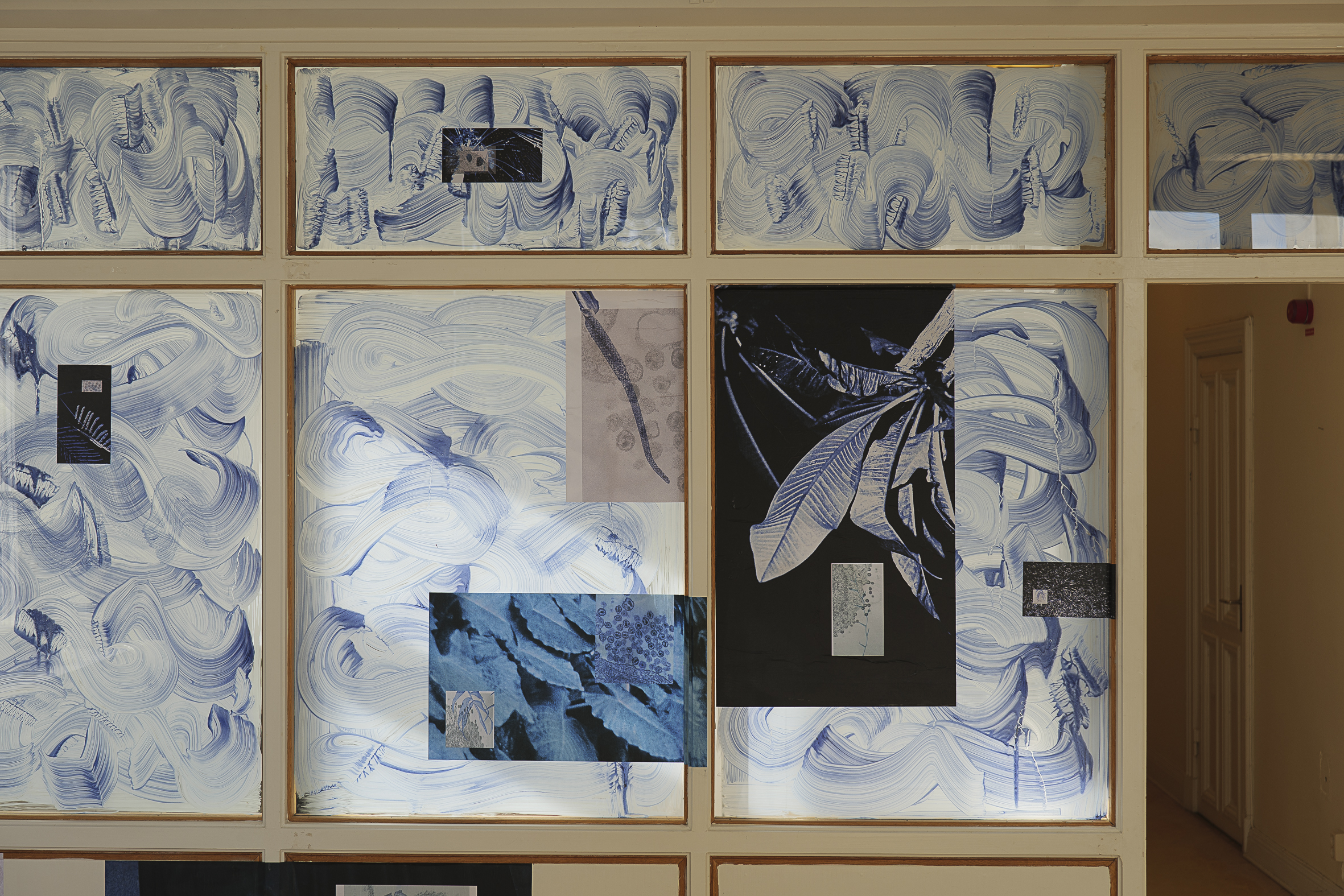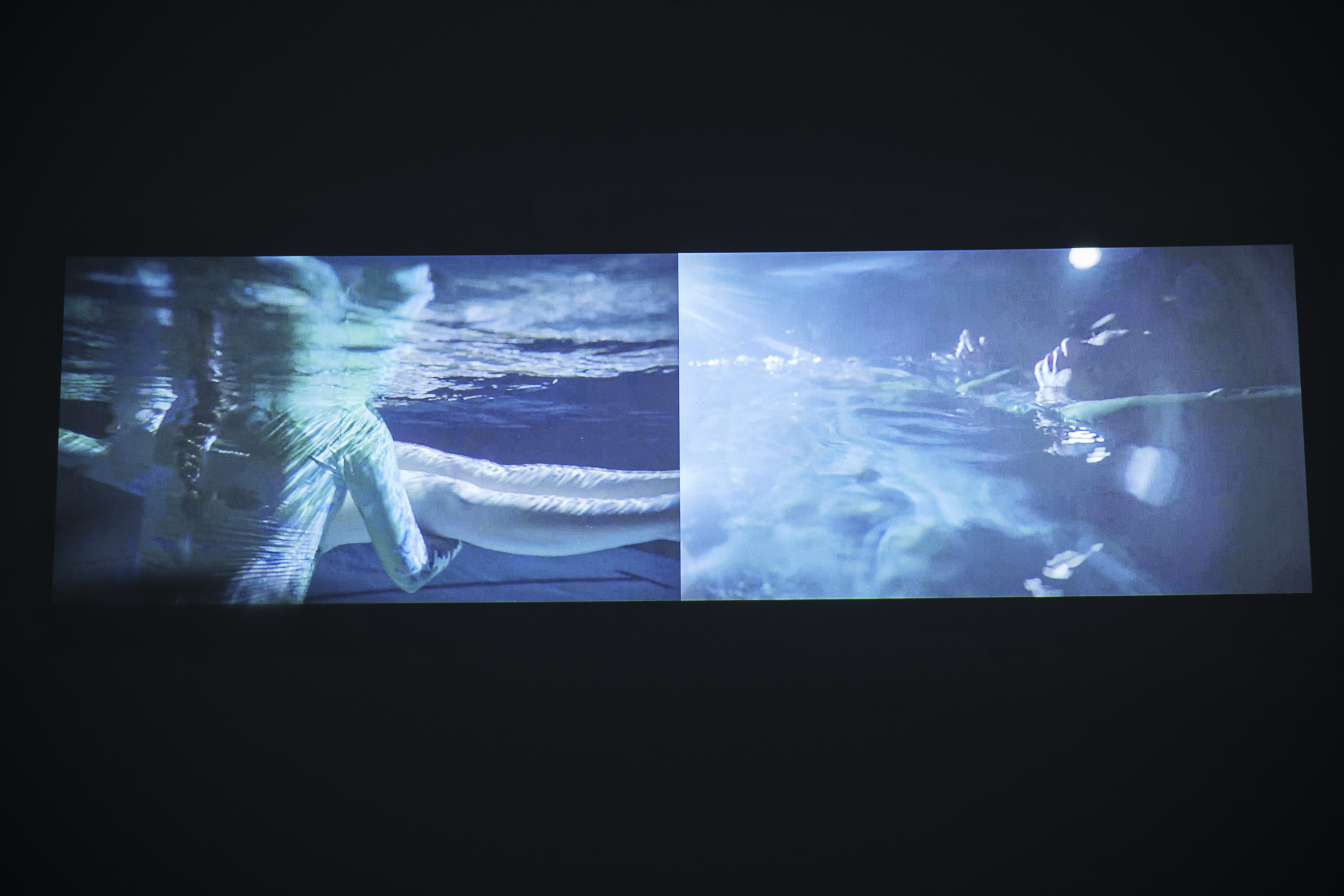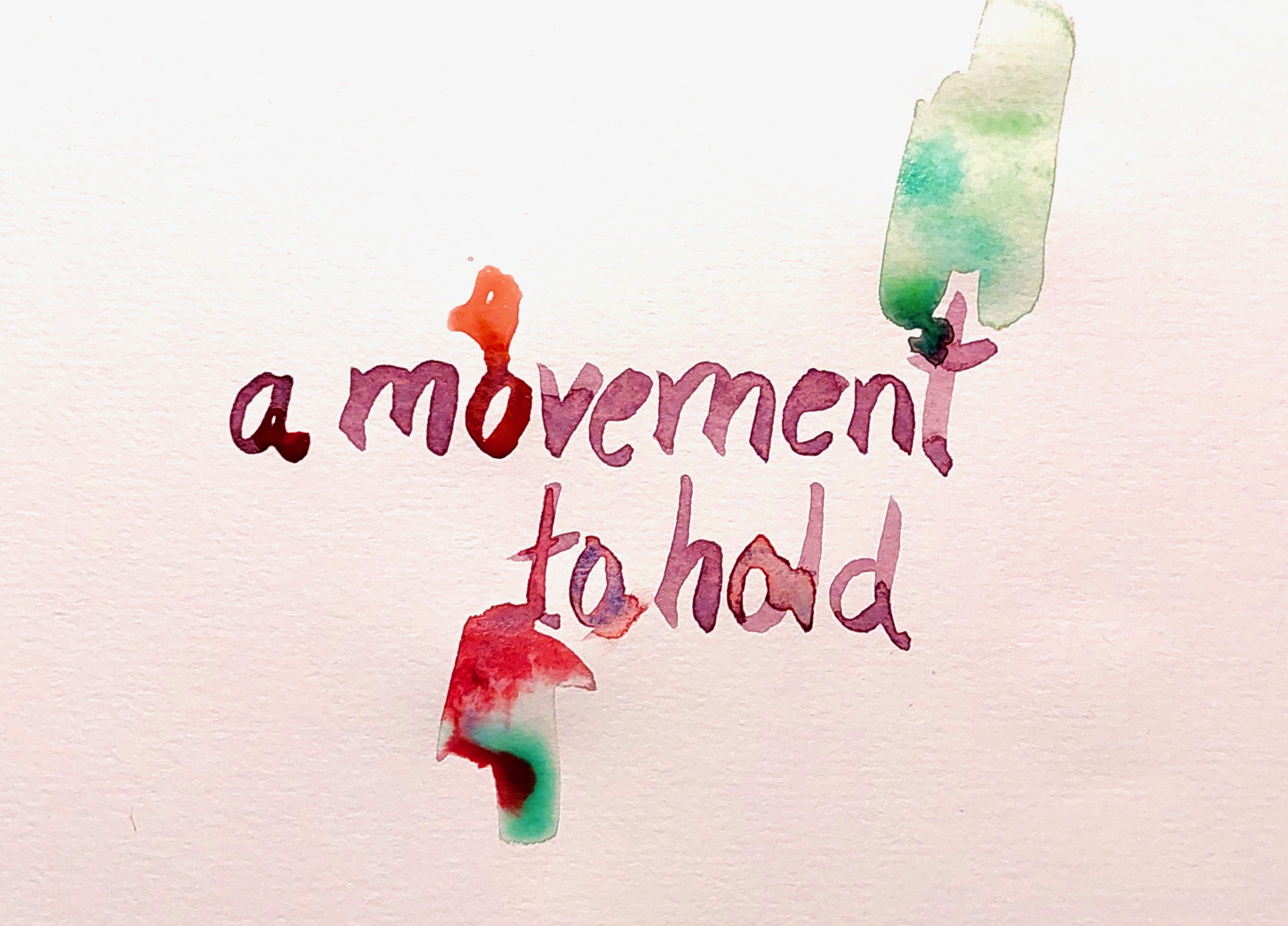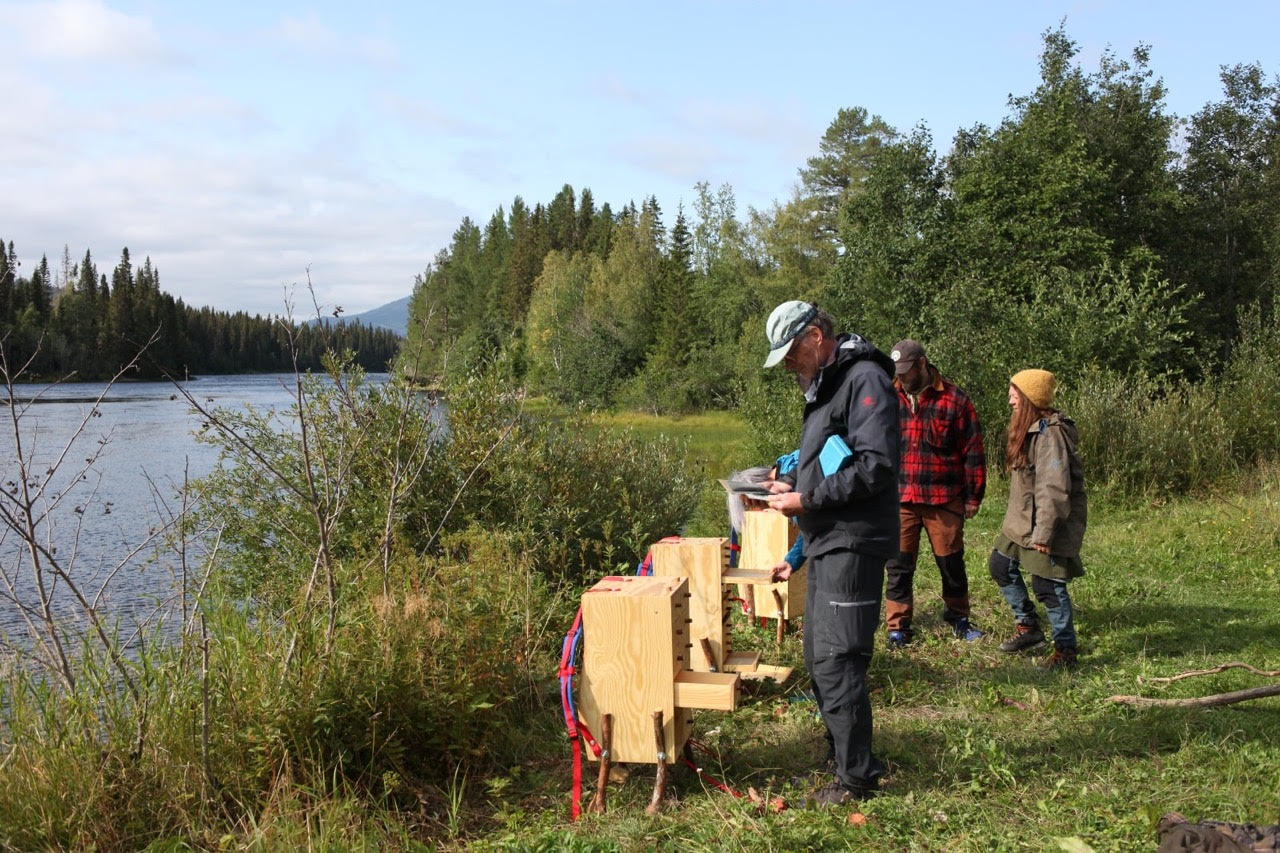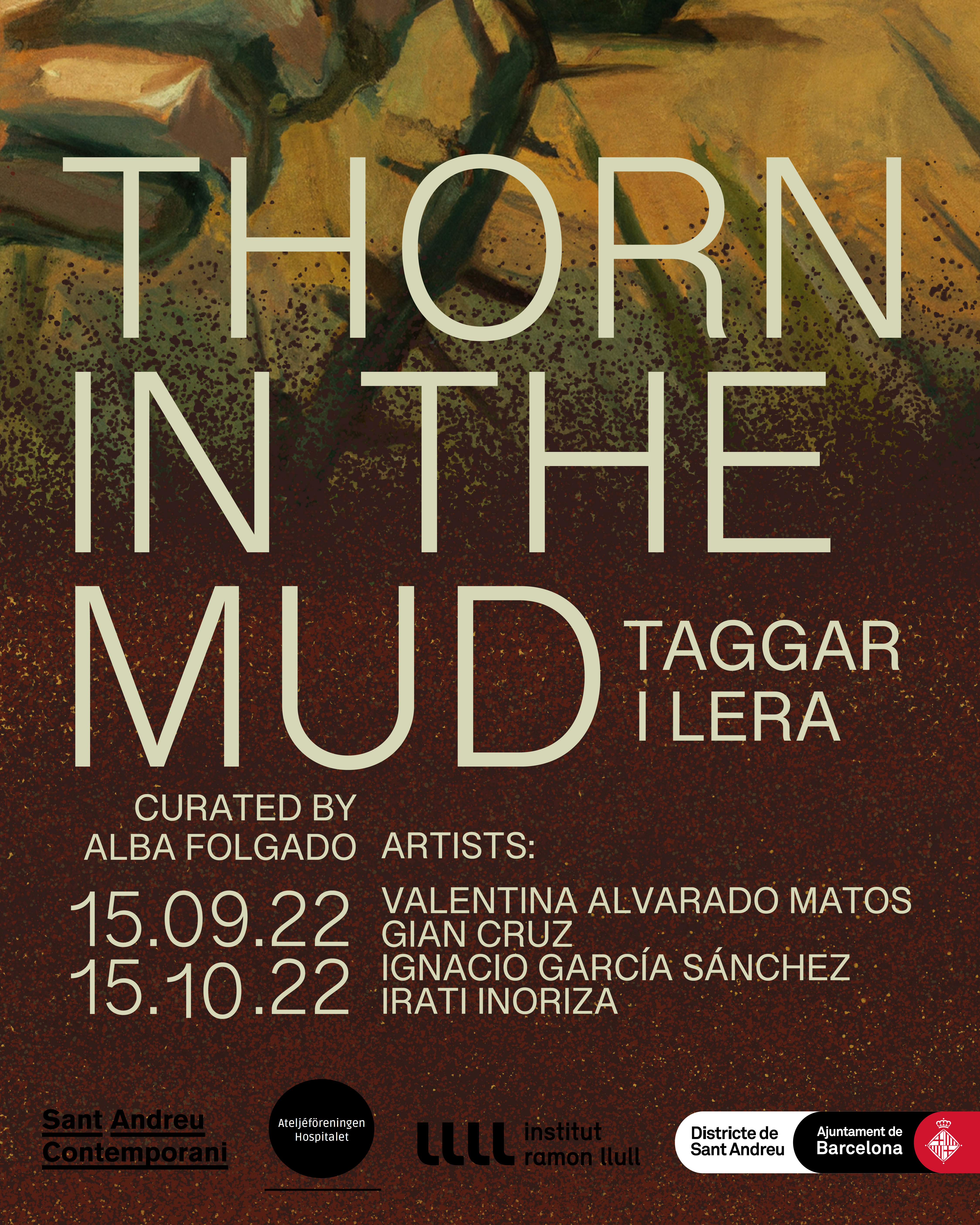
Thorn in the Mud - Ateljéföreningen Hospitalet
September - October 2022
Artists: Valentina Alvarado Matos, Gian Cruz, Ignacio García Sánchez, Irati Inoriza
Curator: Alba Folgado
Let us think of mud as an opaque and aqueous medium; which hides but also allows to build with its clay; it is a medium where it is possible to touch but not to see; where various forms can be intuited and imagined; where the fingers that seek -and then model- stumble upon a thorn that pricks them, a stone that tears their skin, a tangle that holds them back. They are unexpected elements that, either positively or negatively, affect work and force us to consider whether we want to discard them, filter them or incorporate them to the planned creation.
As with the kneading of clay rescued from swampy waters, hardships and assimilations frequently appear associated to the desire of compound ourselves as a society. However, in this situation it is no longer a piece of clay or a stone that disturbs our path, but rather as pressing issues as job insecurity and exploitation, the legacies of colonialism, the perpetuation of the canon and the dominant culture; but also the importance of folklore, traditions and rites for collective transformation. So, how do we decide whether to reconcile ourselves to these ruins or build beyond them?
Thorn in the Mud reflects on the weight that historical heritage and cultural burdens have in the construction of the present, paying special attention to how these are rejected or assimilated in the development of new collective identities. Additionally, the works in this exhibition claim for the use of storytelling, fiction, photography and performance as tools of resistance. It is through these means that they make visible various dissident and non-Western narratives, struggles against the precarization of work, as well as the stigmatization of the LGBTIQ+ collective and other underprivileged people the latest pandemic.
Thorn in the Mud is the resulting exhibition from the fifth call of the SAC International Curatorial Residency Program, curated by Alba Folgado in collaboration with Ateljéföreningen Hospitalet. The participating artists have taken part in the Miquel Casablancas Prize 2021 (Barcelona).
Works in the exhibition:
![]()
Photography: Daniel Ekbladh![]()
Photography: Daniel Ekbladh
Valentina Alvarado Matos
Arrojalatierra
13,48 minutes. HD digitalized Super-8
The hands meet the clay, crush it, and model it transferring the weight and strength of the body to a creation in process. Kneading and digging in the liquid element.
There are also feet, legs and arms. Anonymous members of a collective creation: a work of art and its makers. Then, the dried ceramic is lifted as a finished piece, held by the hands for a moment and just after, it crashes to the ground. Arrojalatierra guides us through a common process in pottery making, including hammering, turning the discarded ceramic into powder, hydration and reuse. It employs a poetic glossary of images to describe the (art) labour as inevitably connected to nature and its processes. What is rotten, what has been destroyed, can also be transformed.
![]()
Photography: Daniel Ekbladh
![]()
Photography: Daniel Ekbladh
Gian Cruz
(séro)TROPICAL(e)
14 digital prints on rage paper.
Multiple combinations of Southeast Asian native plants, augmented microscope images of various viruses or bacteria, and some details of an unknown body, compose what artist Gian Cruz defines as an “atypical performative self-portrait”. Cruz uses a collection of plant images to re-engage with the care routines of the Tropics and attempt to question and undo their colonial legacies rooted in the West. These routines include plant collection, as an exercise that brings you close to nature, as well as the daily activity of a female dominated family structure and their care ecologies. (séro)TROPICAL(e) also reflects on the Philippines as a place defined by their resistance: against colonial exploitation of land and bodies and cis-hetero normativity. A region affected by a continuous reverberation of infectious diseases commencing from the Spanish colonial era , caused by the trade, alteration of ecosystems,
and the colonial agricultural policies, and the evocation of which points to the rising of anti Asian racism linked to historical and contemporary pandemics, like HIV/AIDS, SARS-CoV-1 and SARS-CoV-2.
![]()
Photography: Daniel Ekbladh
![]()
Photography: Daniel Ekbladh
Ignacio García Sánchez
Ruins of the Anthropocene
2 sculptures. Plasterboard, plaster, clay, acrylic paint
The ruin has become an object of worship and admiration, especially for contemporary Western society. Yet it has not been the former political significance imprinted on an object (or architecture) that has raised the interest of the viewer, but rather its visual appreciation. A trend that has motivated the exploitation of cultural remains by the tourist and film industries (among others) and that can lead to the creation of new ideological narratives of the past.
The project Ruins of the Anthropocene focuses on the exploration of this vacuous and detached human obsession through a series of sculptures in the form of ruins. This exhibition presents two of them, which appear as familiar but unreferenced remains. They include symbols and motifs from various past and present civilisations, playing tricks on the viewer. Additionally, they not only bring together very different ages and traditions, but also suggest a dystopian future-past in which we are depicted as a defeated civilisation.
![]()
Photography: Daniel Ekbladh
![]()
Photography: Daniel Ekbladh
Irati Inoriza
Exercises to Ofelia
9,54 minutes. 2 channel video
The time and space that connect death and life. Those seconds, minutes or even hours of agony and transition that crystallised in John Everett Millais's painting ‘Ophelia’ in 1852 –embodied by the woman's body floating in the water– are echoed by a group of synchronised swimmers in Irati Inoriza's work. In turn, the seaweed suits they wear and the darkness of the pool also refer to the ‘Lamia’ figure, a very present myth from Basque culture who lives in the river. By uniting these two strong female aquatic presences, the artist invites us to reflect on how knowledge can be collectively constructed at the limits of human existence. The team of synchronised swimmers, whose sounds are heard as a growing lament at the necessary intervals of breathing (every 80 seconds) thus become an allegory of collective creation, of the learning and sacrifices that occur when working together, when assimilating our own history.
With the support of:




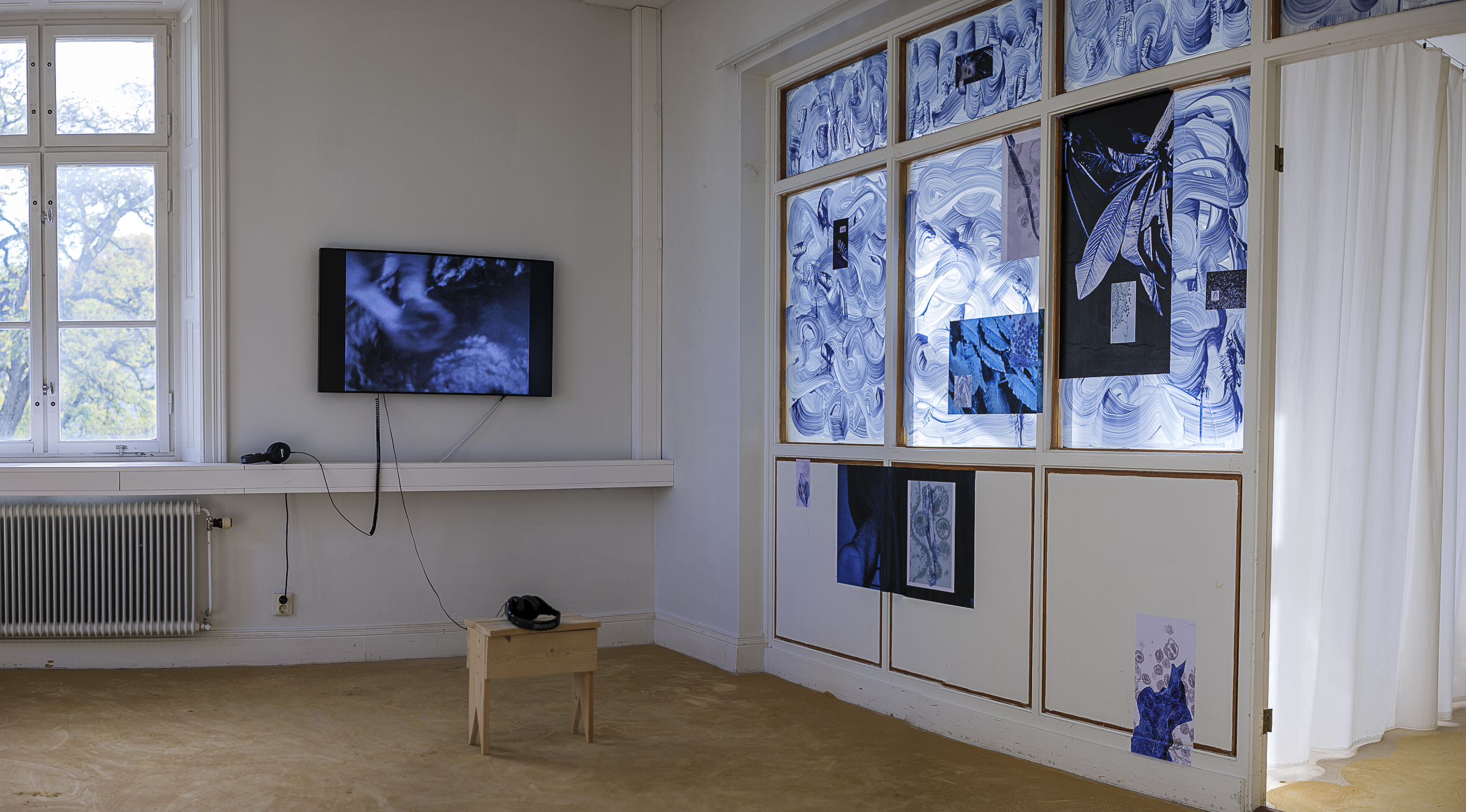
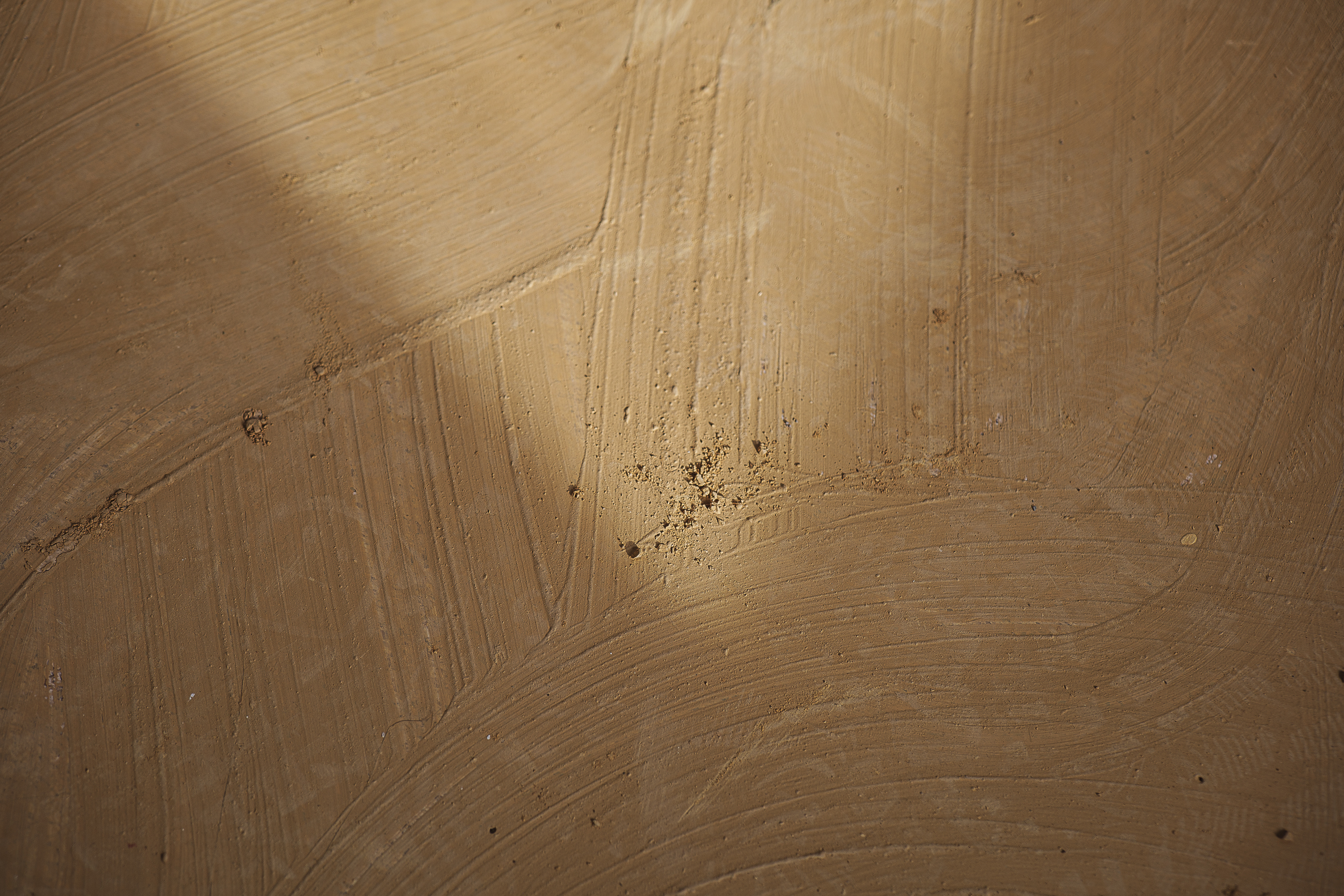
Photography: Daniel Ekbladh
![]()
A Movement to Hold - various locations (ongoing)
Initiated and curated by Alba Folgado and supported by Kulturrådet and Uppsala Kommun
A Movement to Hold is an archive of artistic representations, which is activated and expanded through public activities.
Let’s think of a storage room as a place where we keep different objects, where we also leave memories and knowledge, a place where unexpected things can appear. How could we make that stuff available to many? Could we apply workers’ principles of self-organization, solidarity and resistance to artistic creation? A Movement to Hold is an open archive of artistic representations, which focuses on revisiting immaterial, critical, intersectional and non hegemonic experiences. Through a series of performances, interventions and presentations we will share different artistic processes with the aim of rethinking collective creation and criticality. A Movement to Hold is thus an archive for art in movement and for social movements, a storage room to which it is possible to go in search of ideas and knowledge.
So far A Movement to Hold has hosted activations from artists and collectives: Mireia Rocher, Lyktan, Sandi Hilal, Sam Hultin, Vård och Värde.
If you want to know more about A Movement to Hold, visit the project website.
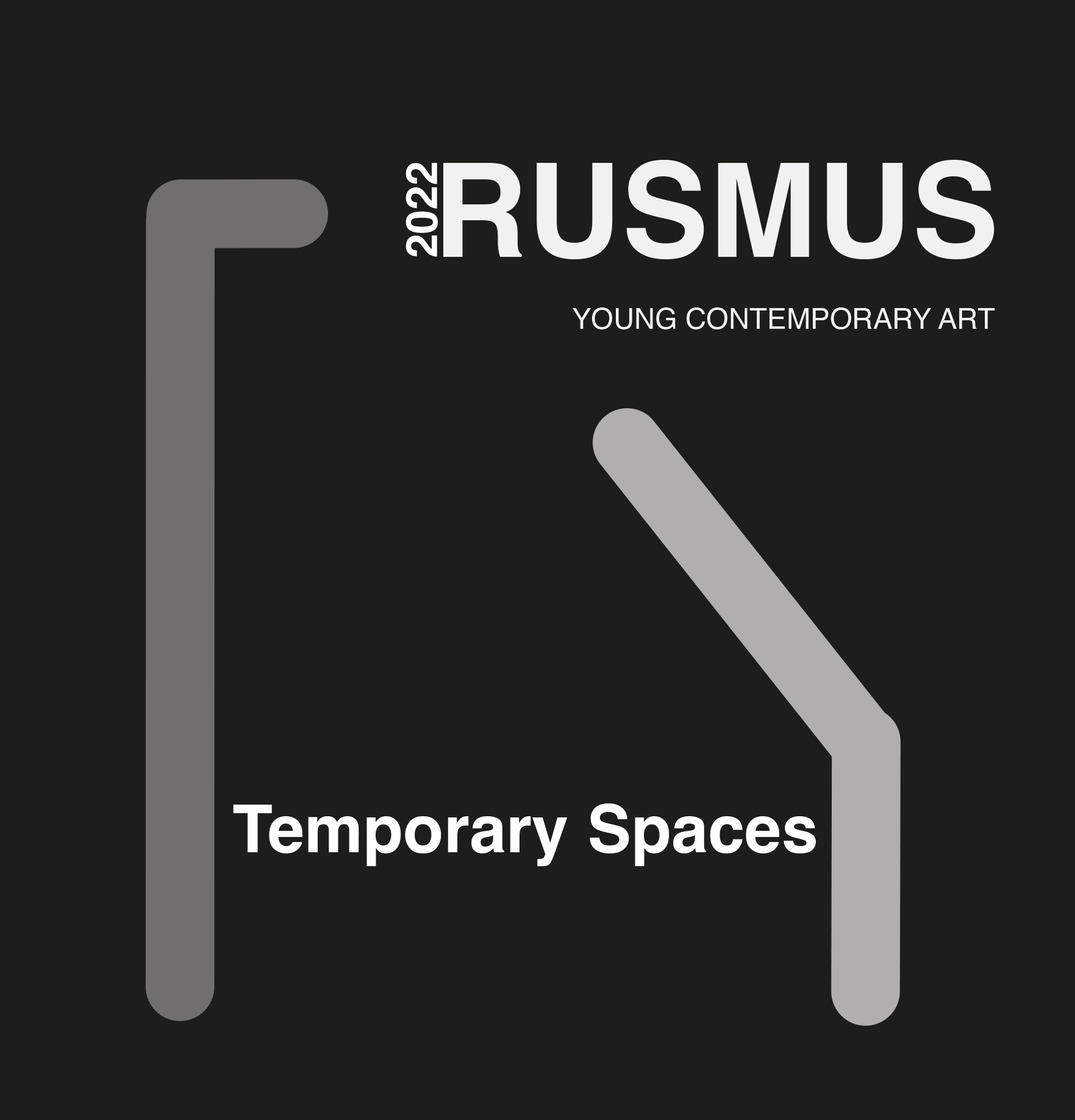
RUSMUS 2022 – Temporary Spaces
Artists: Tova Jertfelt, Martina Jostrup, Sara Kallionen, Mateja Kovacevic, Afrang Nordlöf Malekian, Lisa Morrissey, Hanna Romin, Emilia Sundqvist.
Curated by: Alba Folgado
Project Leaders: Nito Vega, Katarina Sundkvist.
Departing from its previous exploration of the public space as a stage of artistic interventions, RUSMUS takes “Temporary Spaces” as an umbrella-topic around which its interdisciplinary programme develops. Moving between ideas such us the accessibility of the public space, its limits, social character, uses, changing status or even the need to establish a personal and introspective relation to it, the invited artists respond to the topic and present their artworks in a wide array of locations and formats.
Space can be considered as a physical area in which bodies, action and life converge, and the boundaries of which can be fluid. Being more specific, and if we talk about “public” space, we would describe it as an open and accessible place for people, that can be either natural (like a beach), governmental (perhaps, a library), or urban (such as a square). But is the aforementioned realm truly accessible? Privatization and discriminatory policies are constantly transforming public space and limiting its use for many. Furthermore, the physical and legal structures that define it are less and less durable, making it difficult to engage in long-term conversations, constructions and exchanges, on and around it. Consequently, this project puts attention to the temporarily that characterizes socio-political relationships in the space and reflects about how we can affect them from an artistic position.
Each intervention, exhibition and artwork presents a different way of approaching the idea of the “Temporary Space”. Some, show a critical perspective on current gentrification processes that prevent people from closely connecting with the forest – which instead has to grow indoors. Others make a comparison between cultures and problematize their different approaches to gender and social descriptions in a particular location. We can also encounter the ruin or the remains that transformation leaves behind, while evoking fire as symbol of resistance and empowerment. It is even possible to find traces of a recurrent route, a memory of a place, a time, a gesture, a movement, a tale, the embodiment of a public action, a subversive scenography. All of it gathered together to tell the (hi)story of the spaceswe want to inhabit. Even if it is for a limited time.
RUSMUS is a project which focuses on supporting and guiding the practice of young artists who work, live, or are connected with Uppsala and Uppsala Region. An equally important objective for RUSMUS is to democratize the access to art by developing a series of interventions and temporary exhibitions in the public space (both indoors and outdoors). All of this is done in close collaboration with local agents, organizations, and institutions that follow the process and give some advice on the spatial requirements of each artistic intervention.
![]()
RUSMUS 2022 – Temporary Spaces is a Project initiated by Uppsala Konstnärsklubb and developed in cooperation with Uppsala Kommun, Region Uppsala and Uppsala Konstmuseum.
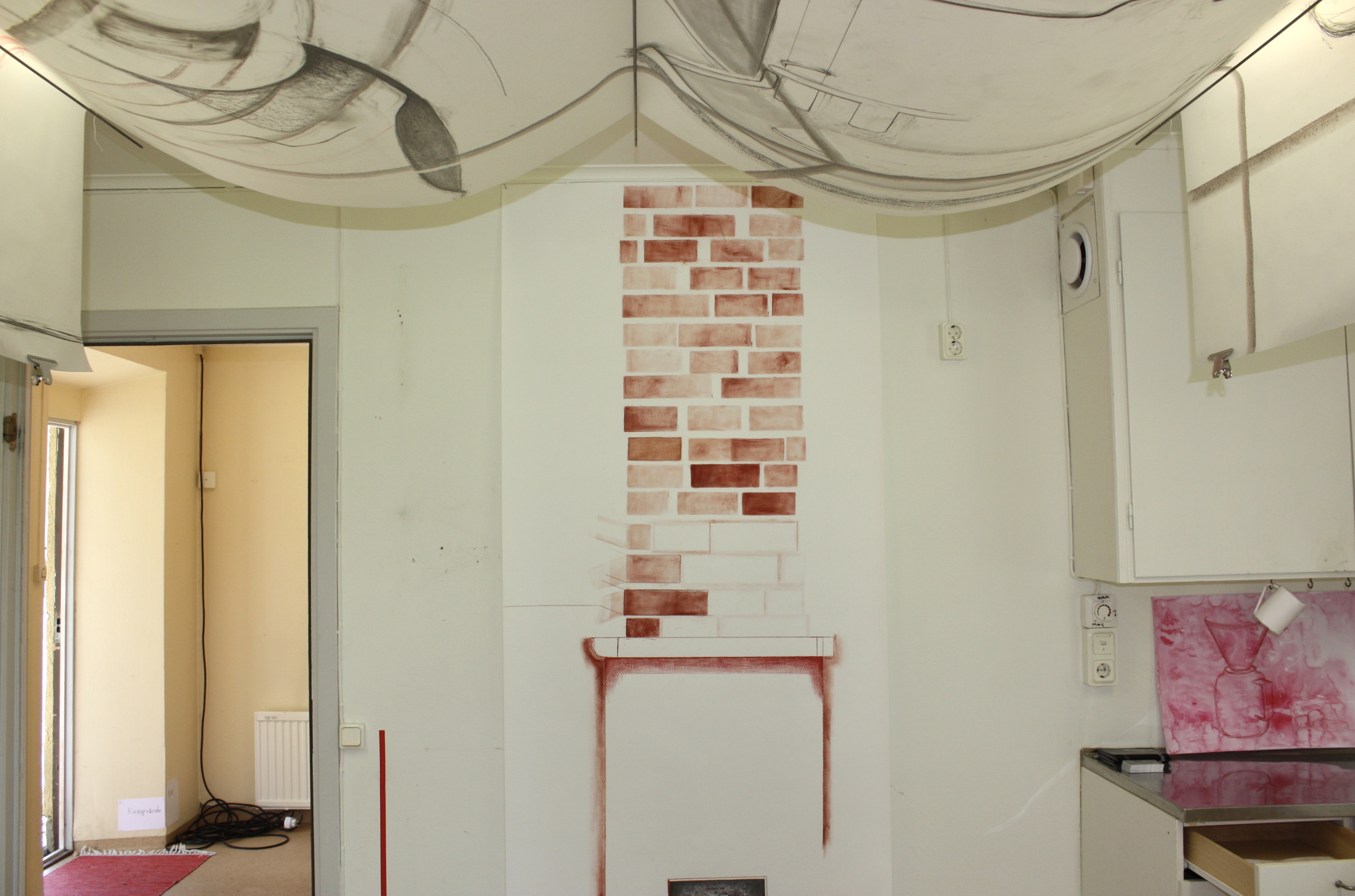
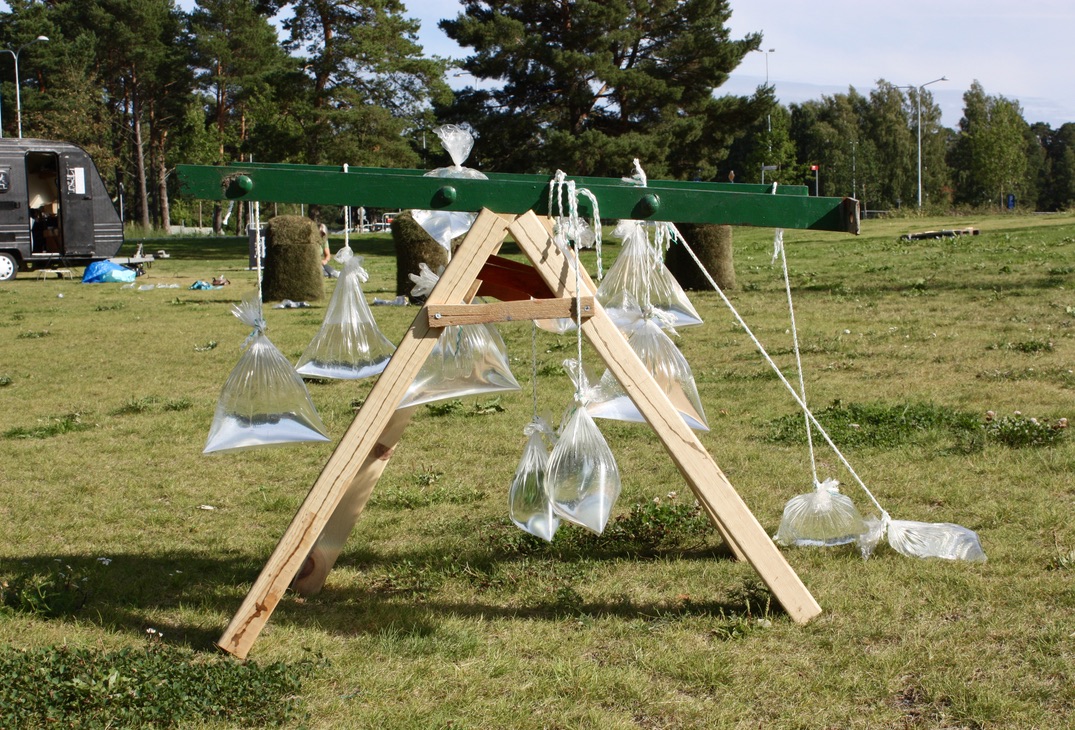

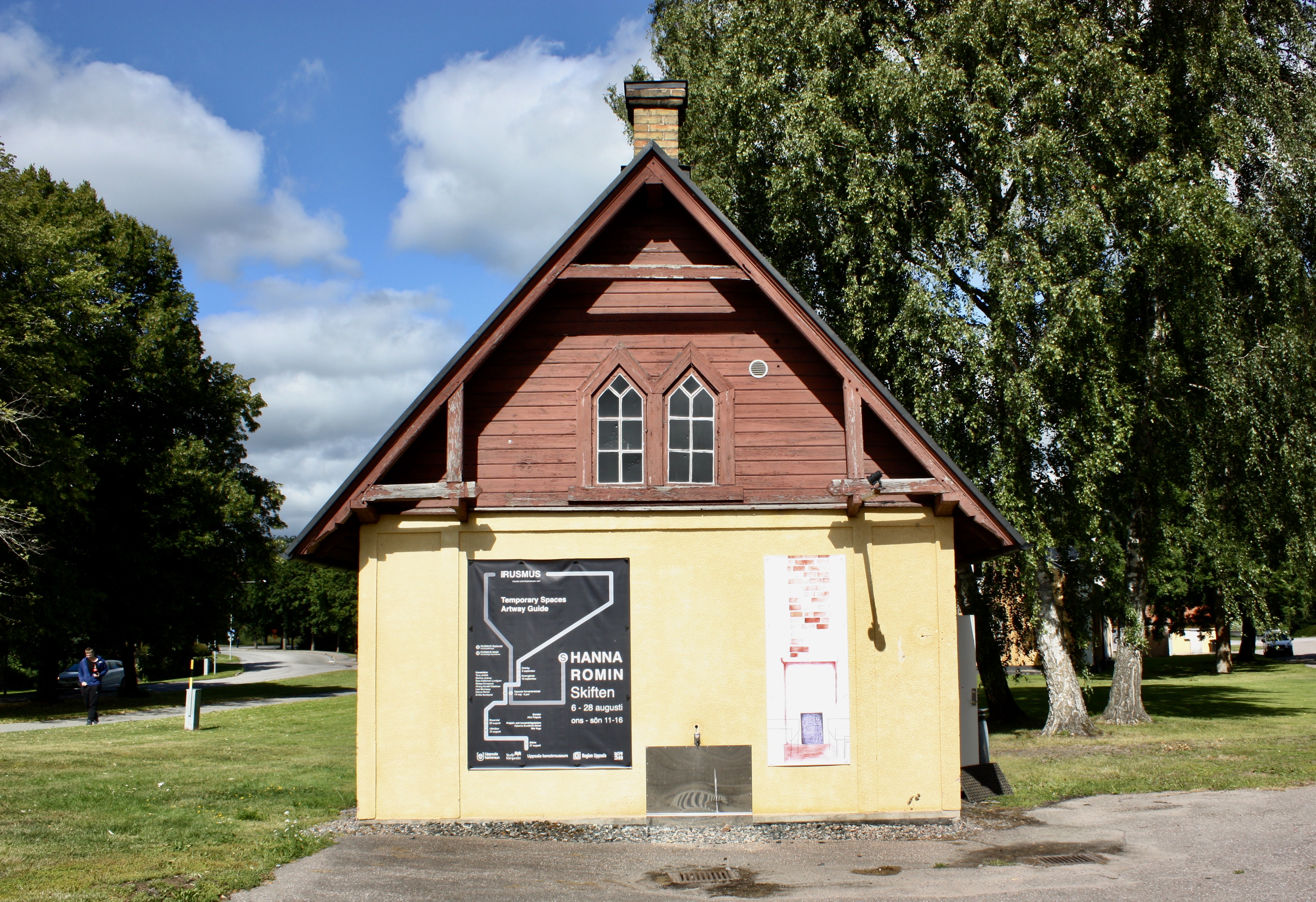
PROGRAM
RUSMUS site-specific
The site-specific exhibitions took place both, indoors and outdoors, in public spaces around Uppsala Region.
Temporary Spaces
April - May 2022
Exhibition at Uppsala Konstnärsklubb
Artists: Tova Jertfelt, Sara Kallioinen Lundgren, Emilia Sundqvist, Martina Jostrup
Skiften
August 2022
Exhibition att Österbybruks Labbyn
Artist: Hanna Romin
RUSMUS Mobil
A public and itinerant program that presented a number of artistic interventions around Region Uppsala.
Ett offentligt mobilt program
Håbos Hemligheter (the secrets of Håbo)
27 June & 27 August
Artistic intervention in Bålsta Aktivitetsparken
Artist: Mateja Kovacevic
-This is Water. Water, say hi!
20 & 24 August
Artistic intervention in Rosendal and Ulleråker
Artist: Lisa Morrissey
Gården sörjer mitt hjärta (the garden grieves my heart)
3 & 10 September
Artistic intervention in Gränby Centrum and Kvarngärdet
Artist: Afrang Nordlöf Malekian


View of the installation at Uppsala Konstmuseum. Photography by Pär Fredin.
A Tale of Resistance and Spatial Imagination - Uppsala Konstmuseum
December 2021 - January 2022
A work developed by Alba Folgado in collaboration with Nachla Libre
Curated by: Åsa Törnlund
This work departs from a research initiated by Alba Folgado, which pays attention to the visual, musical and performative representations that appear in protests as a way to effectively communicate social demands. It questions to which extent a revolutionary song, a puppet presentation, a public performance, or a symbol -such as a band blinding the eyes of a group of women or a green scarf around their neck- can affect social imaginaries. Nachla Libre is an artist working with different disciplines, including text and poetry. She even co-founded and participated of the spoken word platform “Revolution Poetry” which shared stories from the city suburbs. In this occasion Nachla Libre and Alba Folgado collaborate to unveil the nuances of Spoken Word, an oral expression that combines poetry with intonation, bodily gestures and theatrical strategies. Together they present an installation, that through sound and text invites the public to critically connect with stories of social injustice and inequality.
Read the short stories and poems written by Alba Folgado here (english only).
Read the long poem written by Nachla Libre here (swedish only).
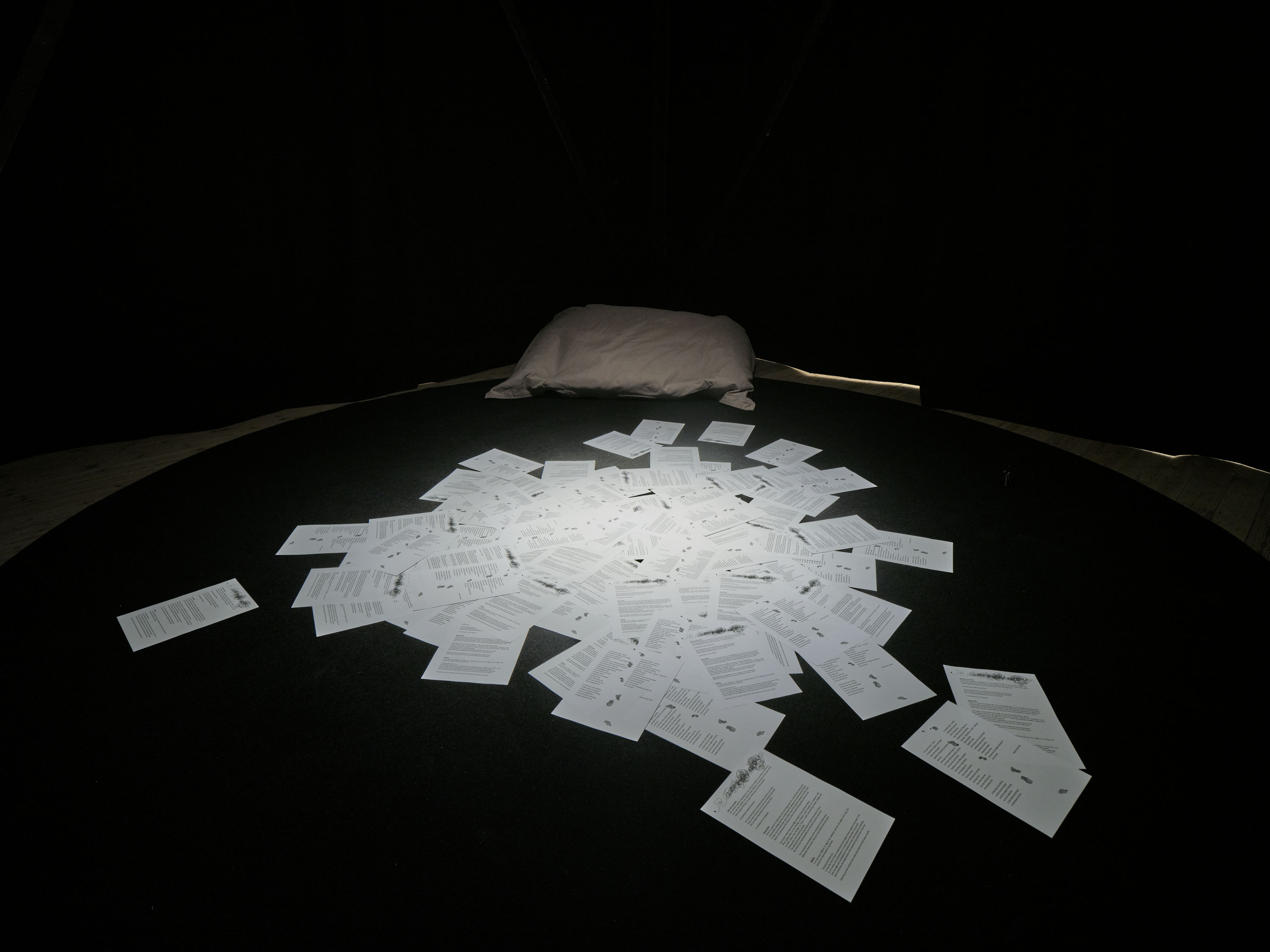
View of the installation at Uppsala Konstmuseum. Photography by Pär Fredin.
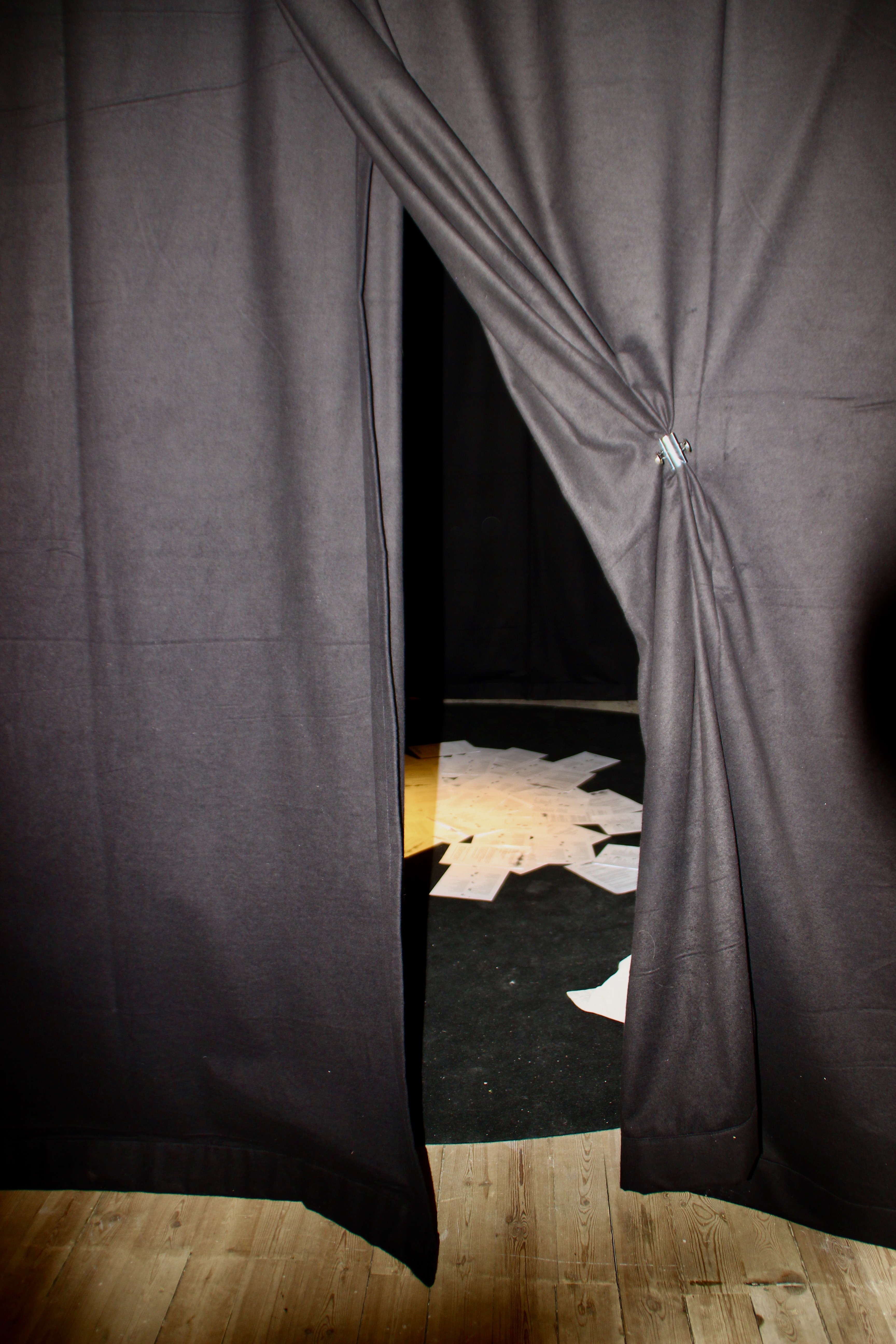
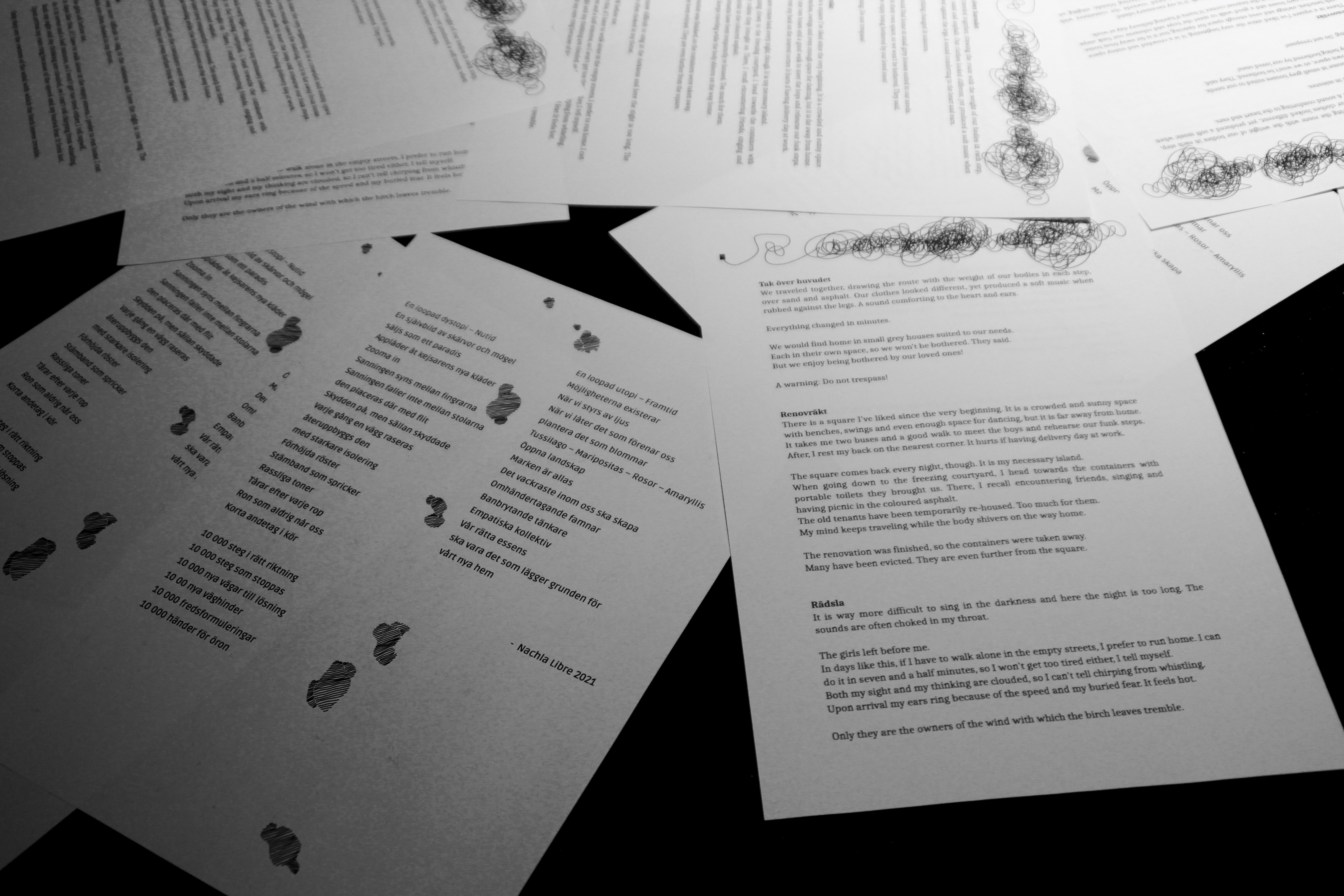
* This project has been supported by Uppsala Kommun and Uppsala Konstmuseum

Presentation of the research during Konstdygnet 2021 (Örebro).
Konstdygnet - Örebro Konsthall
November 2021
Residency and seminarium in collaboration with Folkrörelsernas Konstfrämjande and Sveriges Konstföreningar
Curator in residency: Alba Folgado
As part of Konstdygnet residency I explored the way in which social movements have contributed to rethinking, expanding and democratizing the outreach of art in Sweden. The research analyses the tools and media that artists and organizations have rescued fromthe traditional “activist repertoire” and incorporated into their practice (such as free radio, music, andactive presence in nature and public spaces).
![]()
Det naturliga kontraktet. Detail of the nomad archive (image courtesy of Konstfrämjandet Jämtland).
Between August and October 2021 I conducted a number of interviews with artists and organizations working in different parts of Sweden. Then, I made a selection of projects based on three factors: location (out of the white cube), audience (reaching beyond the art world) and topic (dealing with current socio-political issues). The purpose of these interviews was to map and understand the different ways art affects and is affected by context, resources, social issues and nature. After this process of gathering information and testimonies it became clear that, even before the pandemic art has moved physically and conceptually out of the gallery space, appropriating spaces like a forest, a lake, a workers’ archive, a future town hall or the digital world. The reason for this movement is that, although these spaces can be more challenging than a museum or a white cube, they give visibility and coherence to the projects they house. Many times it is the space itself that inspires the action, and other times it facilitates interaction with different publics and passers-by.
I also observed that the studied examples produced not only an artistic experience for the public, but also facilitated bonding and knowledge exchange by holding informal conversations. These (talks and interactions) are key aspects of human socialization that were hindered due to prolonged isolation and distance, but which are now enhanced by art and other forces. In addition, it is signifcant that questions such as care and nature preservation have gained attention in these projects, also issues that have been widely neglected and which now appear as fundamental pillars for our future society. We need to develop a comprehensive and fair agreement for these needs, and art as an open and refective discipline should contribute to it.
In conclusion, each of the projects here presented focuses on a different topic and formalization. For some it is important to defend natural resources by mixing activism and informal constructions, while others want to rethink collectivity through crafts and forgotten traditions. But together, they even show that a lack of physical infrastructures or understanding is sometimes compensated with creative strategies and resistance. Therefore, I see in them examples of how art can help us regaining forgotten experiences and rights, or at least raising awareness over urgent struggles.
 Detail of the frst number of Vård och Värde, a collective newspaper about care work initiated by Gunilla Lundahl,
Detail of the frst number of Vård och Värde, a collective newspaper about care work initiated by Gunilla Lundahl, Nawroz Zakholy, Ulrika Flink and Jenny Richards.
 Rätten Till Vättern. Handmade poster announcing an action next to Vättern (image courtesy of Österängens Konsthall).
Rätten Till Vättern. Handmade poster announcing an action next to Vättern (image courtesy of Österängens Konsthall). Lek för demokrati. Kids meeting with kommunstyrelsens ordförande Robin Holmberg at the same eye level (180 cm)
Lek för demokrati. Kids meeting with kommunstyrelsens ordförande Robin Holmberg at the same eye level (180 cm) to argue for their cause. (image courtesy of Konstfrämjandet Skåne).
 Detail of the digital cultural and multilingual newspaper Lyktan (source: Konstfrämjandet Västmanland).
Detail of the digital cultural and multilingual newspaper Lyktan (source: Konstfrämjandet Västmanland).
Interviewed and selected projects by Alba Folgado.
